Strong Endurance™ is our umbrella term for all anti-glycolytic training methods.
Anti-glycolytic training is “anti-HIIT” that trains you to produce less lactic acid instead of tolerating more of it. AGT is used by many Eastern European national teams in a variety of sports: judo, cross country skiing, rowing, full contact karate…
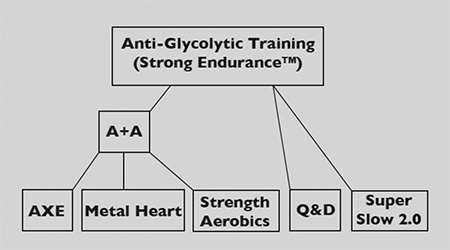
Broadly, there are three categories of anti-glycolytic methods:
1. A+A
This is the original AGT.
A+A (“alactic + aerobic”) is a broad category of exercises that utilizes the “anti-glycolytic vise” to crush glycolysis in fast and intermediate fibers.
Prof. Yuri Verkhoshansky, the father of A+A, explains: “The exercises are organized in a way which allows the loading of the CP mechanism [which fuels brief intense contractions in sports like sprinting and weightlifting] during each set and the stimulation of the aerobic mechanism for its recovery between sets and series.”
This allows for a wealth of training methods and applications. There are three subtypes of A+A: AXE, Metal Heart, and Strength Aerobics.
a. AXE
When you target fast fibers with high power/low rep exercises—general like the kettlebell swing or sport-specific like striking a heavy bag—this is AXE.
The “A” in “AXE” stands for “aerobic.” The “X” refers to type IIX fast muscle fibers. “E” is for “exercise.”
AXE’s original goal is to develop the ability to explode over and over in games and contact sports. It has many additional benefits, including muscle building and fat loss.
An example of an AXE training session is 20-40min of heavy kettlebell swings done for 4-6 reps on the minute. Give each rep an 80-90% effort and keep going until you hit a StrongFirst Stop Sign, e.g., failing to pass the talk test before the next set or a power drop-off.
Learn how to wield AXE from my new book Kettlebell Axe.
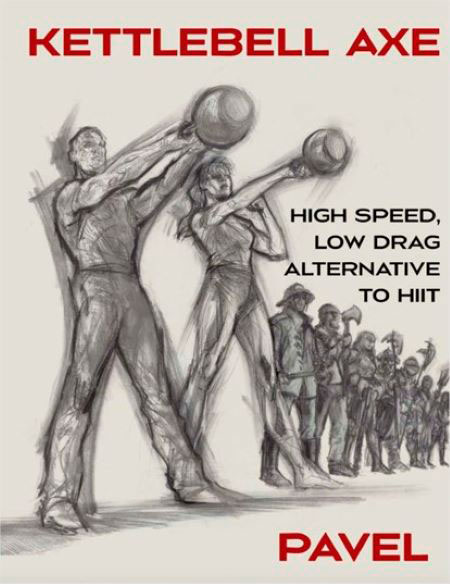
b. Metal Heart
When you anti-glycolytically train intermediate type IIA fibers with light to moderate resistance at brisk to fast speeds for events like obstacle course racing and for aggressive fat loss—e.g., “fast and loose” kettlebell snatches, step-ups, repetition pushups—your method is called Metal Heart.
Soviets were better at inventing great training methods than they were at naming them. Thanks to Accept, one of my favorite heavy metal bands, for the inspiration. Metal Heart is the title of one of its albums and my upcoming book.
Of all AGT categories, it is most demanding on the cardiorespiratory system and does qualify as serious “cardio.”
An example of Metal Heart training is half an hour of walking snatches. Choose a light to medium kettlebell and give a 30-50% effort to every fast and loose rep. Take a step with the kettlebell overhead after each rep and switch hands often. Your breathing between the sets is deep and steady and the session feels like a comfortably hard run. Again, obey the StrongFirst Stop Signs to keep the effort aerobic.
Come and learn Metal Heart plans and a lot more at All-Terrain Conditioning™ seminars taught by StrongFirst Certified Master Instructor Derek Toshner in person and online.
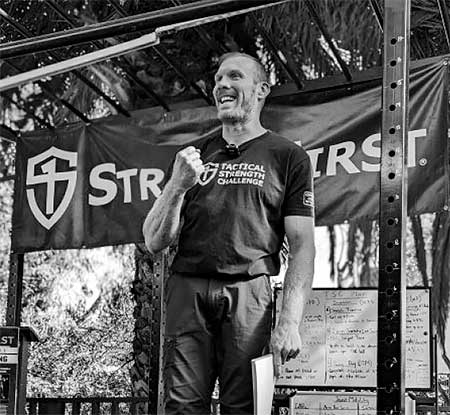
c. Strength Aerobics
When A+A is applied to strength exercises, “grinds” and “semi-grinds,” it is Strength Aerobics for sports like wrestling.
An example of Strength Aerobics is fifteen sets of three reps in the barbell front squat with 70% of your max and 1min of active rest such as shadow boxing between them. No muscle burn is allowed.
Learn a classic Strength Aerobics kettlebell protocol by Alexey Senart, StrongFirst Certified Master Instructor in this article and a whole training system based on it in Iron Cardio, a book by Brett Jones, StrongFirst Director of Education.
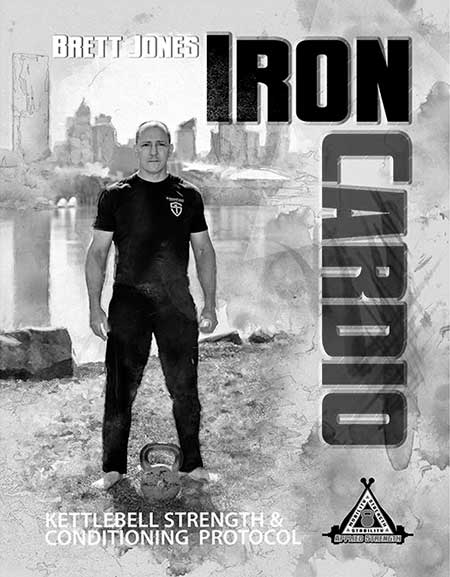
All three subcategories of A+A are rich with “what-the-hell” effects.
2. Super Slow 2.0
This slow twitch muscle fiber hypertrophy method by Prof. Victor Selouyanov makes you swim in acid while training—and enjoy a low acid competition later.
It works because type I fibers come densely preinstalled with mitochondria: building the former nets more of the latter.
Super Slow 2.0 is perfect for sports like wrestling and rowing. One of our former instructors used this training method to row across the Atlantic a few years back.
At StrongFirst we call it “Super Slow 2.0” because of its similarity to a popular bodybuilding method—with crucial modifications, hence “2.0.”
I have written a series of articles about this method:
“Should You Build Your Slow Fibers?”
“How to Build Your Slow Fibers, Part I”
“How to Build Your Slow Fibers, Part II”
“How to Build Your Slow Fibers, Part III”
3. Q&D
US Navy SEAL turned best-selling writer Jack Carr in one of his Terminal List novels:
Reece stood barefoot, staring out… He adjusted his feet…and squatted to grasp the thick handle of the seventy-pound kettlebell before him. Exhaling sharply, he thrust his hips forward, driving the cast iron weight to full extension, keeping his core muscles flexed as it floated briefly on the top of its arc. Gravity swung the bell downward, and he let it fall between his legs as he sucked a breath of air into his lungs. Up he came up again, repeating the process until he’d done ten perfect swings and set the weight back onto the ground. He dropped to his chest and executed ten push-ups, then went back to the kettlebell, alternating reps until he’d performed a hundred of each.
An attentive reader must have recognized Protocol 015 from my book The Quick and the Dead. The weight is moderately heavy, the effort given to each rep is 100%, and the tempo is maximal.
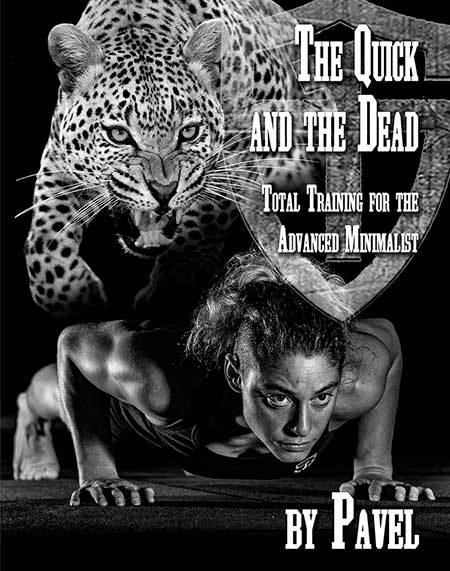
Q&D optimizes the metabolic conditions for upregulating the master regulator of mitochondrial growth, PGC-1α. Refer to the book, for painful biochemistry followed by simple and powerful kettlebell swing plus power pushup and snatch protocols, 015, 033, and 044.
Q&D and AXE are highly complementary. Q&D builds more and bigger mitochondria and AXE makes them function better. The technical terms are mitochondrial biogenesis and mitochondrial respiration, respectively. Alternating the two every six to twelve weeks is a win-win.
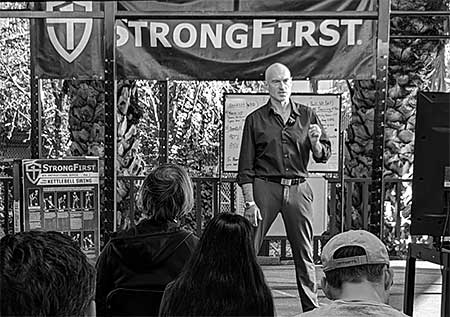
If you want to maximize your athletic performance while improving your health at the same time, say goodbye to HIIT and “metcons” and go anti-glycolytic. AGT delivers for everyone, from the general population to the world’s top athletes.
For a most comprehensive dive into anti-glycolytic training, take a Strong Endurance™ seminar. I am teaching the next one in Paris, France on September 28-29, 2024.
Sign up today and staying power to you!
# # #
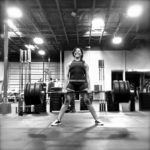

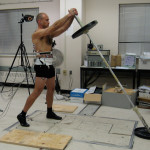
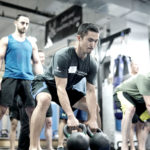

Thanks for this awesome roadmap Pavel. I am closing in quickly on the simple standard and love s and s. As a cyclist and someone who’s never had strong base aerobic fitness, I’m really enjoying the adaptations. What do you recommend as a follow up program to people closing in on timed simple? Is ROP next? Or Q and D with Axxe side be side? Or are these protocols meant to be done separately alongside a primarily endurance outlet? Thank you!
Hello Strongfirstteam, do you have any idea when the “Metalheart” book will come out
Hi Pavel,
Loving the book and really looking forward to the Metal Heart when it is released.
Could I ask 2 questions please, the first is about S & S, would it fall under a modified type of AXE?
The other question is I’m 52 and coming back from a couple of injuries last year. Also do a martial art and have found that going back training I have quickly started to gas. I have started AXE a few weeks ago, will this type of training help with this?
Thanks
Thank you, Dave.
S&S is a hybrid program, between AXE and glycolytic power repeats.
AXE will absolutely help your MA performance.
Thanks for feedback! I’ll keep on and just trust the program, Cheers Pavel
This is an awesome article. I’d love to see all of these subsets of Strong Endurance have their own books.
For those who have reached timeless simple, which of these protocols would you recommend we start with? Or should we hit the timed simple first?
Thank you, Scribe.
You are ready to start AXE. Periodically come back to S&S.
Thank you, Scribe.
If you are after general fitness, I suggest S&S and then AXE.
Thank you sir for the knowledge.
I Have been on the double clean and jerk program from the bjj course for a while. I’m thinking adding pull ups to the mix once a week. I did the newsletter A+A pull up program (20%max reps on the minute for 20 mins) a while a go and it was a great compliment to the clean and jerk. Is there any counter indications to do the pull ups after the clean and jerks.
for example :
A+A Double clean and jerks 20-30 mins
5 mins rest
A+A pull ups 20 mins
thank you very much again sir
Thank you, Dave.
If your elbows can take both cleans and pullups, go for it.
Once a week is only enough to maintain.
Thank you sir.
Hi Pavel
Would an appropriate approach work to improve muscular endurance via using boydweight (or low weight) squats; say 5-6 reps done for example 30 sets with adequate rest to avoid glycolysis?
Thank you
James, what are you going to use your endurance for?
Hi Pavel; to maintain/build muscular endurance for hiking/running in the mountains (the downhill muscle damage that one gets) due to not being able to access mountainous terrain on a consistent basis.
Thank you
James, look up Derek Toshner’s and Kenneth Bolyard’s articles on our site.
My head is all organized by your amazing article!! Thank you, sir!!
I realized that Superslow was also a kind of strongendurance, so I wanted to add one slowtwitch training to my program. Which exercise would be effective to add? Pull up or diamond push up or squat ? I don’t do any special sports activities and I train for Gpp.
Thank you, Steve.
Super slow is a stressful type of training. Unless you are training for a sport like wrestling or rowing or have been prescribed by a doc to lower your weights, you would be better off with a different type of strength and hypertrophy training, e.g., low reps, high sets, long rests, moderately heavy weights. Strength Aerobics is also a good option for a generalist.
Pavel, I’ve been following your work already sometime so thanks (again) for the great article
Any chance you would provide Strong Endurance as an online seminar because Paris is a bit far away, both in time and in location?
Br,
Frank
Thank you, Frank.
Regarding offering the online option for the Paris seminar, please scroll down for an answer by Alexey Senart.
Hi Pavel awesome article!
I’m just wondering what protocol would best suit Trapbar Farmers Carries?
Thanks in advance
Thank you, Robbie.
Please tell me more about these carries.
That is an excellent overview, sir; thank you.
I am very impressed by the development and systematization of our StrongEndurance curriculum.
Practicing according to the SE principles allowed me to improve my endurance while still improving my strength; it improved my combat arts performance. The recovery and sleep are great, too.
Being on the wrong side of 40, I appreciate the combo of Health and Strength more and more.
Thank you, Pavel. Keep doing what you have been doing.
Great article which finally clarifies the Strong Endurance typology.
One thing remains not clear for me – what is the target adaptation of Strength Aerobics? I understand it’s A+A with grinds and it might have use in grappling sports, but what is exactly the difference in adaptation you receive? Is this strength endurance whereas with ballistics it would be power endurance?
Thank you, Andreja.
Strength Aerobics, like AXE, develops mitochondria and capillaries in fast fibers—but not as well.
Why do it at all?—Due to specificity, when your endurance events involve slower contractions, e.g. pullups.
In addition, SA has unique WTHE, including accelerated HR recovery after a very hard strength endurance effort. It also builds strength.
This article is golden. Answers all the questions I had around this topic. Without realizing I’ve used AXE protocols before the book came out but have been enjoying using it after the book as well. Looking forward to the Metal Heart book.
Thank you, Vikas.
Hi Pavel,
Thanks very much for posting this clear summary of the AGT methods. It clears up a lot of questions for me and is definitely required reading for those interested in all forms of conditioning.
Cheers,
Adrien
Thank you, Adrien.
Great article which helped me a lot putting a few more pieces together. But a few questions remain:
– What muscle fibers are trained with Strength Aerobics?
– AXE -> mitochondrial respiration, Q&D -> mitochondrial biogenesis, but what’s with Metal Heart, Strength Aerobics and Super Slow? What mitochondrial effects do they have?
– Q&D is type IIA and IIX fibers. Is that correct?
I have also posted these questions and a few more in the forum:
https://www.strongfirst.com/community/threads/navigating-through-the-strongfirst-kb-universe.19230/page-3#post-506240
Thank you, Tobias. Please see my answer to Andreja.
MT respiration.
Great article as always. I already use QnD, 060, KBSF C&J, Slow Twitch 2.0 in my all year schedule.
My question is, what are benefits of strength aerobic (iron cardio, etc.) over AXE or KBSF C&J ?
Is strength aerobic something that you would recomend to first responders, firefighters, police?
Thank you, Vojta
Thank you, Vojta, please see my answer to Andreja.
This is a fantastic article! It’s so nice to have all of this information catalogued and explained well. Thank you!
Thank you, Dave.
Pavel, I was wondering if it has been considered, but please add an online option!
Griffin, I will ask Alexey Senart who is hosting the event to respond.
Griffin,
Thank you for asking! We are considering the online option, but as of now, I cannot assure you that it will come through. If it does, we will announce it both on the SF website and on our social media channels.
Great article, Pavel.
Question, I did a program that you posted where you do a clean and jerk with one hand on the minute, then with the other on the half minute. Then after going 30 minutes repeatedly without failing the talk test, add one clean, proceed again, then add second jerk until you build up to three C&Js with each arm for 30 minute. The governor is the talk test.
I had terrific results with this program and revisit it often. Where does this program fall in this umbrella of protocols given the talk test is the limiting factor?
Thank you, Albert.
Pure AXE.